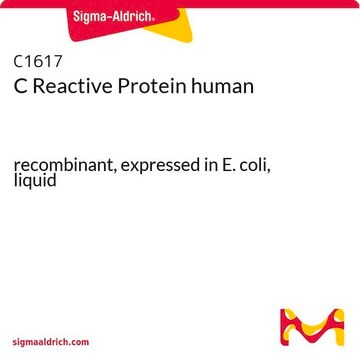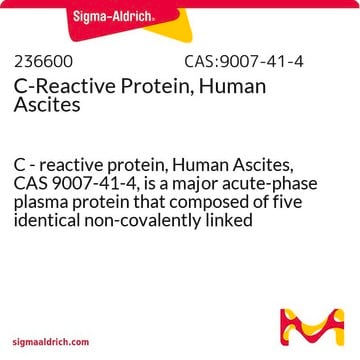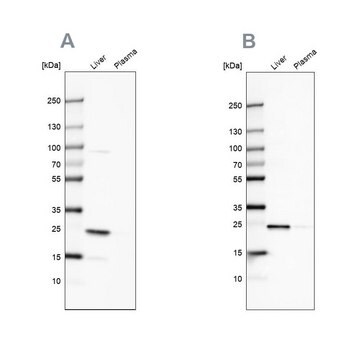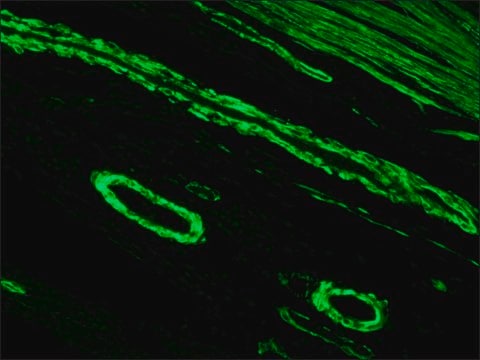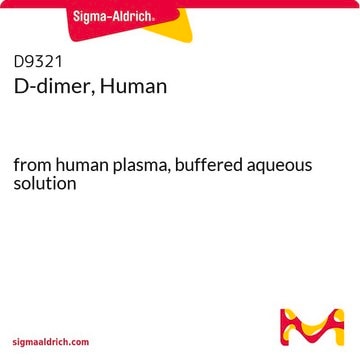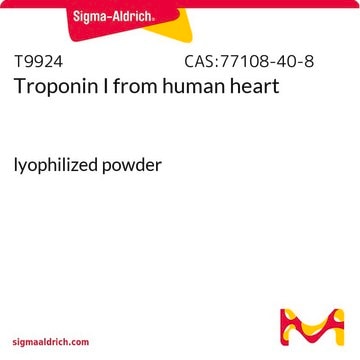C4063
C Reactive Protein from human fluids
buffered aqueous solution
Sign Into View Organizational & Contract Pricing
All Photos(1)
About This Item
Recommended Products
biological source
human fluids
Assay
≥90% (SDS-GE)
form
buffered aqueous solution
UniProt accession no.
application(s)
cell analysis
storage temp.
2-8°C
Gene Information
human ... CRP(1401)
Looking for similar products? Visit Product Comparison Guide
General description
C Reactive Protein (CRP) is a homopentameric protein, which belongs to the pentraxin family. It is produced in liver hepatocytes, smooth muscle cells, macrophages and adipocytes. CRP gene is located on human chromosome 1q23.2.
Application
C Reactive Protein from human fluids has been used:
- to investigate the neutrophil extracellular traps (NETs)-dependent generation of monomeric CRP (mCRP) from pentameric CRP (pCRP)
- to evaluate its effects on areas at risk (AAR) of myocardium with ischemia-reperfusion injury
- to measure intracellular levels of reactive oxygen species (ROS)
Biochem/physiol Actions
C Reactive Protein (CRP) plays a critical role in apoptosis, phagocytosis, nitric oxide (NO) release and the secretion of cytokines, such as interleukin-6 and tumor necrosis factor-α. CRP acts as a marker for cardiovascular diseases, rheumatoid arthritis and cancer.
C reactive protein (CRP) is an acute phase protein. Serum levels in patients with atherosclerosis is predictive of increased risk of myocardial infarction (MI) and stroke. The cytokine IL-6 is thought to be the key mediator in hepatocyte secretion of acute phase proteins including CRP. CRP mediates innate immunity by binding to microbial polysaccharides and to ligands exposed on damaged cells. The binding activates the classical complement pathway (C1, C4, C2, C3 but not C5-9). Opsonization of the substrates leads to their uptake by phagocytic cells and limits the inflammatory response.
C reactive protein (CRP) is an acute phase protein. Serum levels in patients with atherosclerosis is predictive of increased risk of myocardial infarction (MI) and stroke. The cytokine IL-6 is thought to be the key mediator in hepatocyte secretion of acute phase proteins including CRP. CRP mediates innate immunity by binding to microbial polysaccharides and to ligands exposed on damaged cells. The binding activates the classical complement pathway (C1, C4, C2, C3 but not C5-9). Opsonization of the substrates leads to their uptake by phagocytic cells and limits the inflammatory response.
Packaging
Package size based on protein content.
Other Notes
CRP is isolated from human fluids (Ascitic/Pleural).
Physical form
Solution in 0.02 M Tris, 0.28 M sodium chloride, 0.005 M calcium chloride, pH 7.8 - 8.2, containing 0.1% sodium azide.
Analysis Note
Protein determined by Lowry.
Disclaimer
RESEARCH USE ONLY. This product is regulated in France when intended to be used for scientific purposes, including for import and export activities (Article L 1211-1 paragraph 2 of the Public Health Code). The purchaser (i.e. enduser) is required to obtain an import authorization from the France Ministry of Research referred in the Article L1245-5-1 II. of Public Health Code. By ordering this product, you are confirming that you have obtained the proper import authorization.
Storage Class Code
10 - Combustible liquids
WGK
WGK 3
Flash Point(F)
Not applicable
Flash Point(C)
Not applicable
Certificates of Analysis (COA)
Search for Certificates of Analysis (COA) by entering the products Lot/Batch Number. Lot and Batch Numbers can be found on a product’s label following the words ‘Lot’ or ‘Batch’.
Already Own This Product?
Find documentation for the products that you have recently purchased in the Document Library.
Customers Also Viewed
Cristina Cunha et al.
The New England journal of medicine, 370(5), 421-432 (2014-01-31)
The soluble pattern-recognition receptor known as long pentraxin 3 (PTX3) has a nonredundant role in antifungal immunity. The contribution of single-nucleotide polymorphisms (SNPs) in PTX3 to the development of invasive aspergillosis is unknown. We screened an initial cohort of 268
Emma R Job et al.
Journal of immunology (Baltimore, Md. : 1950), 192(1), 271-281 (2013-12-07)
The long pentraxin, pentraxin 3 (PTX3), can play beneficial or detrimental roles during infection and disease by modulating various aspects of the immune system. There is growing evidence to suggest that PTX3 can mediate antiviral activity in vitro and in
Amy Jennings et al.
The Journal of nutrition, 144(2), 202-208 (2013-12-18)
Although laboratory data suggest that several flavonoid subclasses are involved in glucose metabolism, limited clinical and epidemiologic data are available. The current study examined associations between habitual intake of flavonoid subclasses, insulin resistance, and related inflammatory biomarkers. In a cross-sectional
Role of C-reactive protein at sites of inflammation and infection
Sproston NR and Ashworth JJ
Frontiers in Immunology, 9 (2018)
Lene Krenk et al.
Anesthesia and analgesia, 118(5), 1034-1040 (2014-05-02)
Postoperative cognitive dysfunction (POCD) is reported to occur after major surgery in as many as 20% of patients, elderly patients may especially experience problems in the weeks and months after surgery. Recent studies vary greatly in methods of evaluation and
Our team of scientists has experience in all areas of research including Life Science, Material Science, Chemical Synthesis, Chromatography, Analytical and many others.
Contact Technical Service
